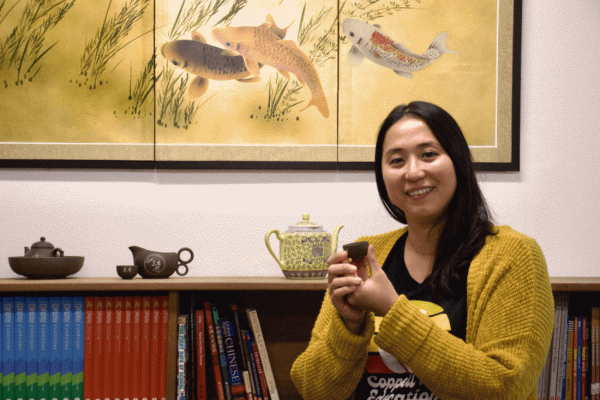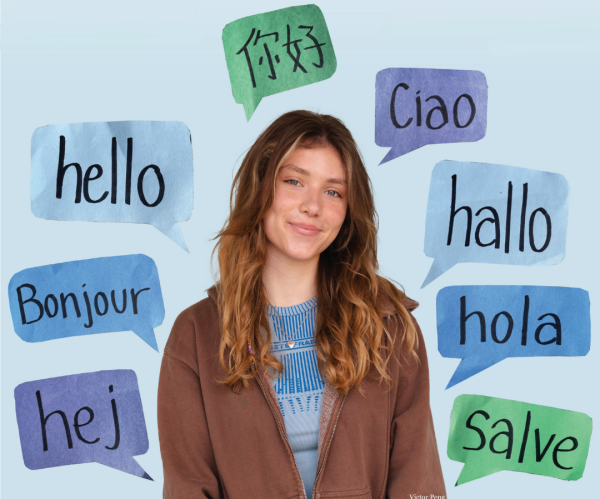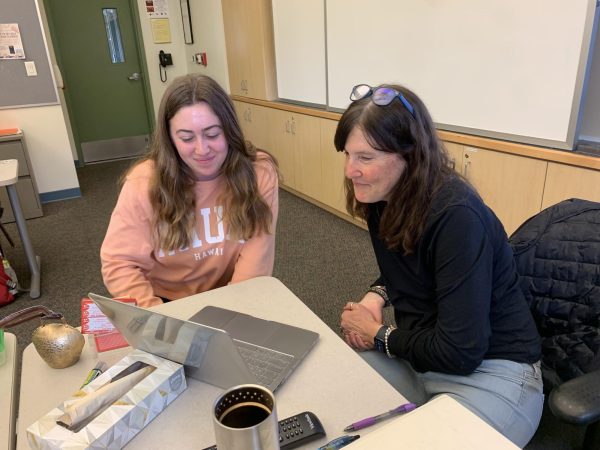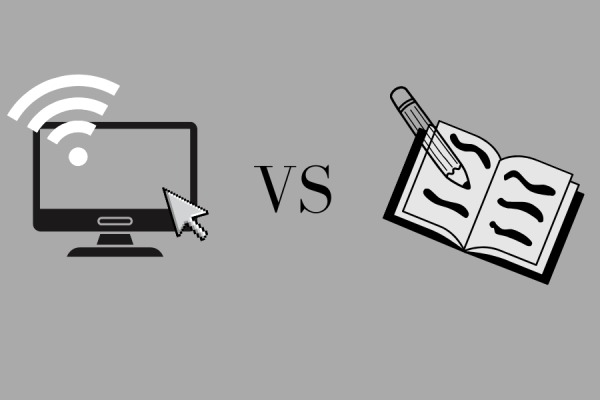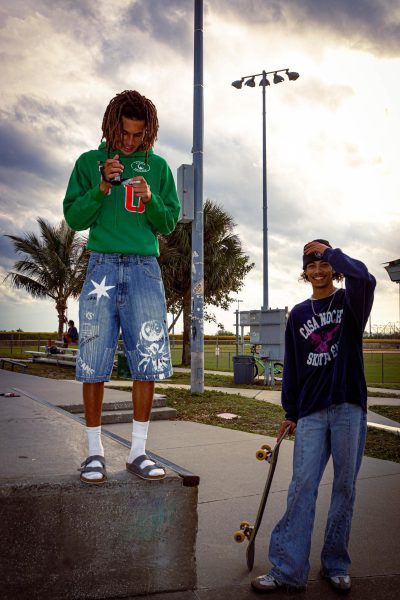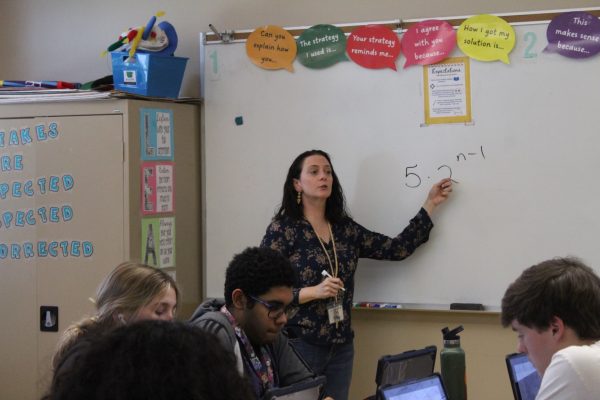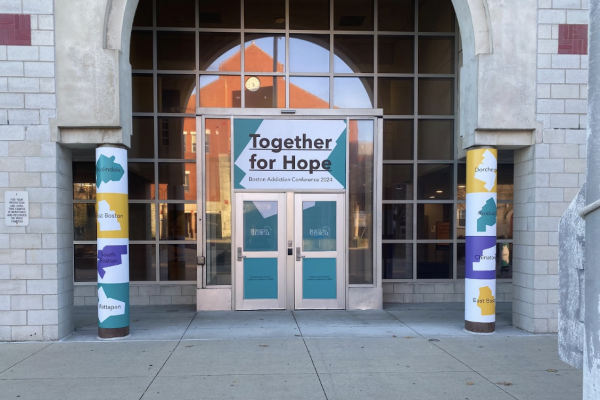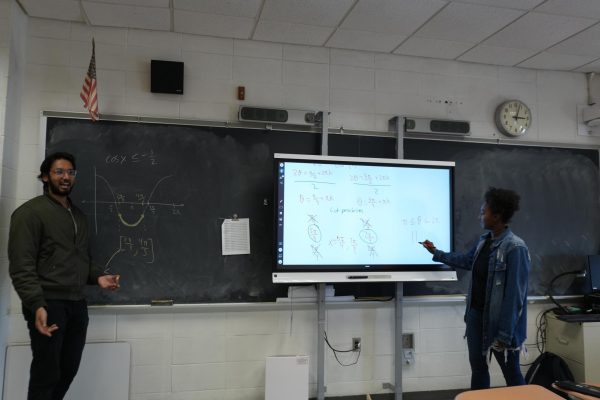Senior Haily Lonsbury commits to living life beyond a label
November 10, 2020
There is a lot to figure out about yourself as you move through high school. For senior Haily Lonsbury, a person who identifies as part of the LGBTQ+ community, the primary thing she sought to figure out was her sexual orientation, and more specifically, the label.
The LGBTQIA+ community
The LGBTQIA+ community (Lesbian, Gay, Bisexual, Transgender, Queer, Intersex, Asexual) consists of many different sexual orientations and gender identities. There is little to no information given on the amount of people in the United States who identify within this community as the U.S. Census does not incorporate any questions pertaining to sexual orientation and/or gender identity into its data gathering.
However, research conducted by Gallup reports that in 2016, about 4.1%, or about 10 million Americans, identified as LGBT here in the United States. In 2012, only 3.5%, or 8.3 million Americans, identified as LGBT, so over the span of five years Gallup underwent for data collection, their results show an increase each year. This increase is likely not due to a literal increase in people affiliating as LGBTQIA+, but in changing social norms that are increasingly providing vocabulary and a safe space for members of the LGBTQIA+ community.
Recently, the HRC Foundation (Human Rights Campaign) and the University of Connecticut released the results of a LGBTQ Teen Survey asking questions about the challenges these teenagers face, including questions concerning mental health. 12,000 LGBTQ teens, ages ranging from 13 to 17, from all 50 states answered the survey. A few results stated that 77% of LGBTQ teens reported feeling depressed recently, 70% reported that recently they have been feeling worthless and hopeless and 67% reported hearing family members making negative comments about those who identify as LGBTQ.
With the help of the internet
Lonsbury has always been aware of the LGBTQ+ community all throughout her life.
“My parents both have friends that are a part of the community and they’ve known them since before I was born,” she recounts, “so they’ve been there pretty much my whole life. When I was younger, I knew that girls can like girls and boys can like boys, but I never really knew what the words for those were. . . Once I had internet access I got to learn a lot more. When I got on social media, I started following people that are a part of the community more and more and it never occurred to me that maybe, just maybe, I was actually a part of the community too.”
The internet, and more specifically, celebrities and the social media app Instagram, have allowed Lonsbury to find all the missing pieces of herself and finally connect them together. It was a very confusing and, at some points, heart-breaking process as some of those she trusted completely reacted negatively towards the pansexual label she initially identified with.
“I’ve known someone in real life who threatened me because I said I was attracted to girls too,” she says somberly. “That person isn’t in my life anymore, thank goodness, but they made me realize that I have to be careful with who I give this information [sexual orientation] to.”
Confusion and acceptance
At first, Lonsbury decided to label herself as pansexual, but quickly learned that she would rather not identify with a label.
“When I first realized I didn’t only like men, I wasn’t sure what to identify myself as because I didn’t really know the different sexualities,” she explains. “Once I found out what pansexual was, I decided to identify as that. I thought it would be nice to have a word that represented what I felt. I kind of forced it on myself.”
Pansexuals are a minority in the LGBTQ+ community as statistics pertaining to the amount of individuals who identify as pan are not found or at least widely mentioned. As a minority group, there is a lot of misinformation about pansexuals, leaving many to feel outcast and even misinterpreted. The exclusion can cause feelings of loneliness, depression, anxiety, and confusion.
Lonsbury found herself surrounded by copious amounts of untrue information pertaining to this group in the LGBTQ+ community, limiting her ability to discern what was true or false. She gradually became her own biggest obstacle for finding acceptance, unable to accept the pansexual label or acknowledge herself for who she really was.
“I completely am supportive of the [LGBTQ+] community,” she conveys sincerely, “but I sometimes feel like it’s hard to support myself. I feel like I don’t deserve to be able to express how I feel about my sexuality and I don’t deserve to be a part of the community. Sometimes, I feel insecure about my sexuality . . . pretty much, in the most simple way I can put it, what goes through my brain is: yes, pansexuality is real and it is valid, but I’m not allowed to be pan.”
A big part of the LGBTQ+ community is the need to be accepted for who they are by the ones they love. According to One of Us INC, an organization dedicated to providing support for those in the LGBTQIA+ community since 2018, 42% of people who are LGBTQ+ report living in an unwelcoming environment and that the biggest problem they face is unaccepting families.
Lonsbury was fortunate enough to be able to confide in her younger sister, sophomore Cynthia Brown, during times of uncertainty. Brown identifies as pansexual within the LGBTQ+ community and the two sisters fully support one another and have grown closer since they came out.
“My sister supported me when I came out to my mother and when I was struggling on what I identified myself as,” Brown recounts fondly. “I supported Haily when she came out to me. . . and I supported her on the labels she went by, and now that she chose not to have a label.”
The fact that both Lonsbury and Brown were able to find acceptance in one another during a time of confusion and struggle has made their bond stronger and allowed them to grow confidence without the fear of judgment from those who lack understanding.
Life beyond labels
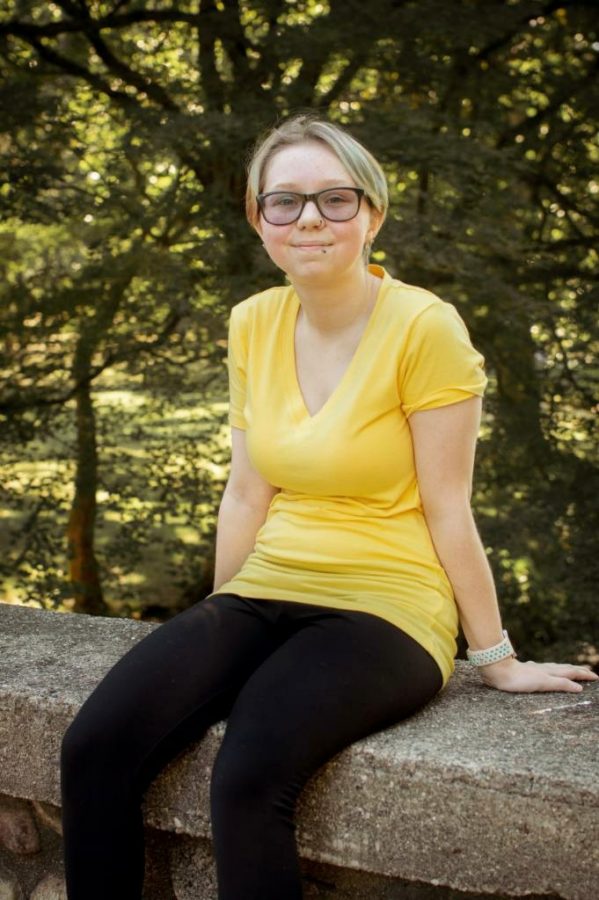
The least talked about and generally the most controversial part of the LGBTQ+ community is those who decide that they do not need to label their sexuality and overall feelings. During Lonsbury’s time of self reflection, she looks back indifferently on her time of research for a sexual orientation she could identify with.
“I was confused,” she shares, “there were so many different options to choose from with the labels. When I decided on pansexual, I didn’t really feel comfortable because at the time, I didn’t realize that I didn’t even need a label.”
Lonsbury finds that her lack of a label allows her to be happy and comfortable with who she is as a person.
“With a label,” she explains, “I feel the need to map out the specifics of my sexuality when it’s not specific at all.”
Most people who identify their sexual orientation without the use of labels feel as if their complex emotions could not be defined by one word and that they don’t need to be categorized in order to tell themselves how they feel or who they are as a person.
“If I like someone, then I like them,” Lonsbury states confidently.
Lonsbury has an ally in her decision to live life beyond definitions in her friend, senior Naomi Randall, who also identifies as pansexual.
“I think labels are for people that want them,” she says. “No one is obligated to define themselves for the benefit of others; if it makes you happy, use labels, if it doesn’t, don’t. Anyone who tells you otherwise has no right to do so.”
Both Lonsbury and Randall agree on the fact that labels can add convenience and make it easier to understand others, but for Lonsbury, it’s still worth it to abandon them for her own identity.
“If someone thinks that everyone needs to have a label for their sexuality, they are being inconsiderate about that person’s feelings because you don’t know what may have happened that made them not want to have a label,” she imparts earnestly. “I’m happier since I’ve found other people that also don’t have labels. There haven’t been a lot . . . but the ones I do know are very supportive.”
The lack of a label allows Lonsbury to be able to pick and choose which aspects of her sexual orientation she is willing to share, making her feel much more confident.
“Now, I’m happy with my decision to not have a specific label and I feel comfortable with it. I don’t feel like I’m forcing myself to do something anymore,” she concludes thoughtfully.
This story was originally published on The Northern Light on November 10, 2020.





























![IN THE SPOTLIGHT: Junior Zalie Mann performs “I Love to Cry at Weddings,” an ensemble piece from the fall musical Sweet Charity, to prospective students during the Fine Arts Showcase on Wednesday, Nov. 8. The showcase is a compilation of performances and demonstrations from each fine arts strand offered at McCallum. This show is put on so that prospective students can see if they are interested in joining an academy or major.
Sweet Charity originally ran the weekends of Sept. 28 and Oct. 8, but made a comeback for the Fine Arts Showcase.
“[Being at the front in the spotlight] is my favorite part of the whole dance, so I was super happy to be on stage performing and smiling at the audience,” Mann said.
Mann performed in both the musical theatre performance and dance excerpt “Ethereal,” a contemporary piece choreographed by the new dance director Terrance Carson, in the showcase. With also being a dance ambassador, Mann got to talk about what MAC dance is, her experience and answer any questions the aspiring arts majors and their parents may have.
Caption by Maya Tackett.](https://bestofsno.com/wp-content/uploads/2024/02/53321803427_47cd17fe70_o-1-1200x800.jpg)
![SPREADING THE JOY: Sophomore Chim Becker poses with sophomores Cozbi Sims and Lou Davidson while manning a table at the Hispanic Heritage treat day during lunch of Sept 28. Becker is a part of the students of color alliance, who put together the activity to raise money for their club.
“It [the stand] was really fun because McCallum has a lot of latino kids,” Becker said. “And I think it was nice that I could share the stuff that I usually just have at home with people who have never tried it before.”
Becker recognizes the importance of celebrating Hispanic heritage at Mac.
“I think its important to celebrate,” Becker said. “Because our culture is awesome and super cool, and everybody should be able to learn about other cultures of the world.”
Caption by JoJo Barnard.](https://bestofsno.com/wp-content/uploads/2024/01/53221601352_4127a81c41_o-1200x675.jpg)




